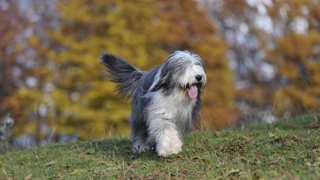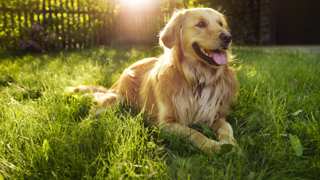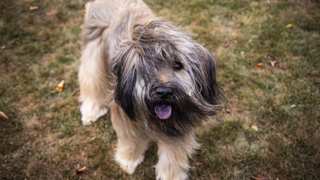Eurasier Grooming
The Eurasier has the typical coat for a Spitz type: medium-length, thick, and double-layered, with longer feathering on the legs, tail, underbelly, and neck. The coats shed regularly (and heavily during the spring and fall shedding seasons), so consistent brushing will be necessary to reduce the amount of shed hairs and to minimize tangling. Otherwise, though, overall Eurasier grooming won't be too time-consuming.
Brush your Eurasier 2-3 times per week with a pin brush. First wet the coat with mist from a spray bottle, then go through the coat section by section with the brush, moving in the direction of hair growth. If you encounter a tangle, first try separating it with your fingers, then if needed continue working it out with the end teeth of a greyhound comb. You can also use the comb to smooth out the longer furnishings if you like. (During shedding season, daily brushing is best; some owners also like to use de-shedding tools during these periods to help with dead hair collection.)
Dogs of this breed keep themselves pretty clean, so an Eurasier bath will generally only be necessary 2-3 times per year--unless, of course, the dog gets especially dirty or stinky and an "emergency bath" is called for. When bathing an Eurasier, be sure to use shampoo made for dogs, as the human kind has a different pH and can irritate the dog's skin.
And no Eurasier haircuts are required. (See the section below to find out why shaving an Eurasier coat short is never a good idea.)
In addition to its coat, your Eurasier will need regular maintenance in other areas. Brush the dog's teeth 2-3 times per week using a regular toothbrush (but canine toothpaste); clean the ears monthly with canine ear cleaning solution; and trim the dog's nails every 2-3 months with standard nail clippers.
Though owners can learn how to perform all aspects of Eurasier grooming themselves, it's a good idea to take the dog to a professional groomer at least once. The groomer can give the dog a nice makeover, and provide tips on how to groom an Eurasier at home.



